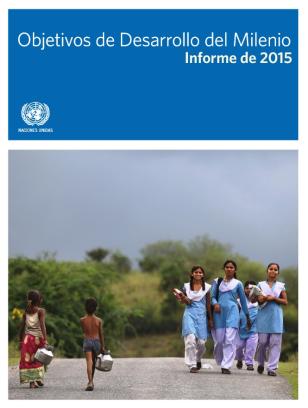The Millennium Development Goals Report 2014
The Millennium Development Goals Report 2014
November 4, 2015
This report examines the latest progress towards achieving the MDGs. It reaffirms that the MDGs have made a profound difference in people’s lives. Global poverty has been halved five years ahead of the 2015 timeframe. Ninety per cent of children in developing regions now enjoy primary education, and disparities between boys and girls in enrolment have narrowed. Remarkable gains have also been made in the fight against malaria and tuberculosis, along with improvements in all health indicators. The likelihood of a child dying before age five has been nearly cut in half over the last two decades. That means that about 17,000 children are saved every day. The target of halving the proportion of people who lack access to improved sources of water was also met.
The concerted efforts of national governments, the international community, civil society and the private sector have helped expand hope and opportunity for people around the world. But more needs to be done to accelerate progress. We need bolder and focused action where significant gaps and disparities exist.
Member States are now fully engaged in discussions to define Sustainable Development Goals (SDGs), which will serve as the core of a universal post-2015 development agenda. Our efforts to achieve the MDGs are a critical building block towards establishing a stable foundation for our development efforts beyond 2015.
Highlights
- The MDG-1 target has been met, poverty rates have been halved between 1990 and 2010, but 1.2 billion people still live in extreme poverty.
- Despite impressive strides forward at the start of the decade, progress in reducing the number of children out of school has slackened considerably.
- Women are assuming more power in the world’s parliaments, boosted by quota systems.
- Despite substantial progress, the world is still falling short of the MDG child mortality target.
- Much more still needs to be done to reduce maternal mortality. Poverty and lack of education perpetuate high adolescent birth rates.
- There are still too many new cases of HIV infection.
- Millions of hectares of forest are lost every year, threatening this valuable asset. Global greenhouse gas emissions continue their upward trend.
- Official development assistance is now at its highest level, reversing the decline of the previous two years.

 Locations
Locations





